
The Most Beautiful Snakes on Planet Earth
Admiration for the animal kingdom is a non-uniform phenomenon. Creatures such as eagles, orcas, elephants, and butterflies are unlikely to garner detractors, but snakes, whether big or small, rare or commonplace, are palpably divisive. Sure, some aversion is sensible since venomous and invasive species are potentially harmful, but this article is all about adoration. From sheer scale to shimmering scales, these are the most beautiful snakes on planet Earth. Let's start in the Amazon rainforest, where a record-breaking addition to the scientific catalog was only recently added.
Northern Green Anaconda
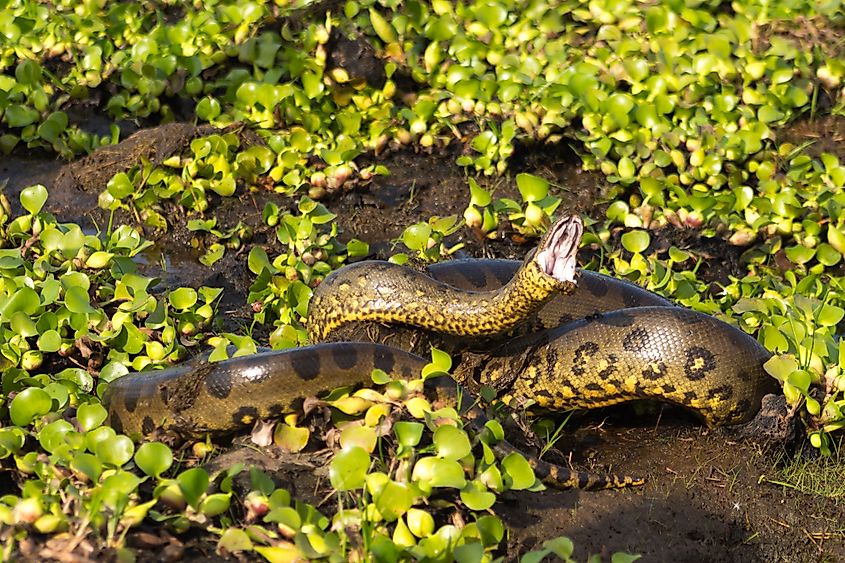
In terms of mass, green anacondas are the largest snakes in existence. But until a 2022 expedition to a remote region of Ecuador's Amazon jungle, it was thought that there was just the one species (i.e. Eunectes murinus). But the resulting combination of visual and genetic evidence has since shown that there are two distinct subspecies separated by geographical domain and 10 million years of divergent evolution. Amazingly, the northern green anaconda (Eunectes akayima) is even bigger than its cousin to the south. Thanks to the accompanying National Geographic crew, an underwater video showing a brave snorkeler swimming alongside a beautiful female anaconda that was deemed to be 21 feet in length (6.3 meters) and weigh over 440 pounds (200 kilograms) quickly went viral.
Brazilian Rainbow Boa
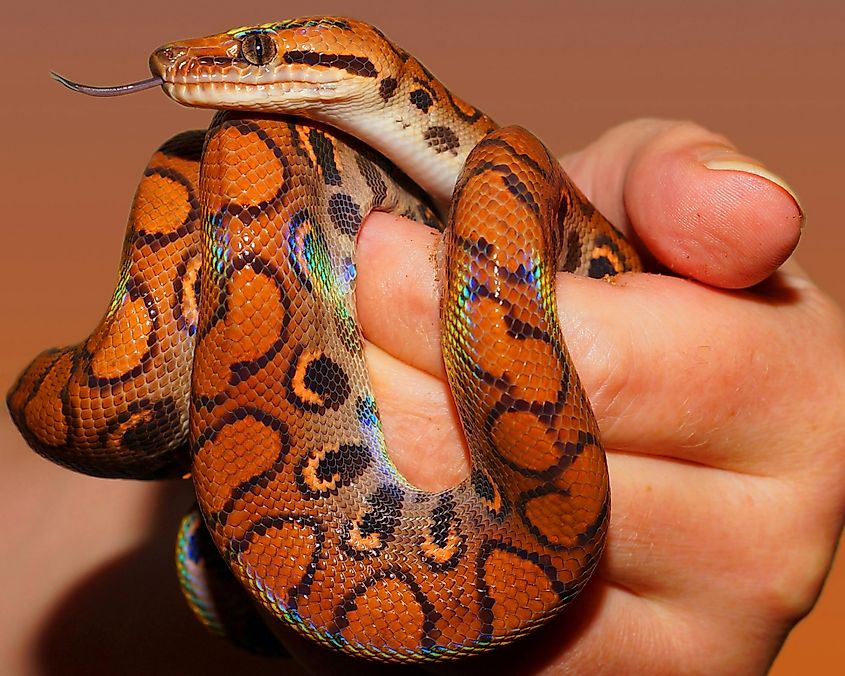
While we're in the Amazon basin and discussing members of the boa family, this solitary and iridescent snake deserves some attention. The Brazilian rainbow boa (Epicrates cenchria) measures between four and six feet long and features a soft-brown or reddish-brown body with black-bordered orange circles and sharp black lines down its arrow-shaped head. However, as the name indicates, it produces a psychedelic effect from tiny ridges on its skin that refract light at certain angles—something rarely seen in the wild due to its primarily nocturnal hunting habits. Rainbow boas are currently listed as "Least Concern" by the International Union for Conservation of Nature. Still, their demand in the illegal pet trade, combined with ongoing habitat destruction, could soon alter that prized status.
Prairie Rattlesnake
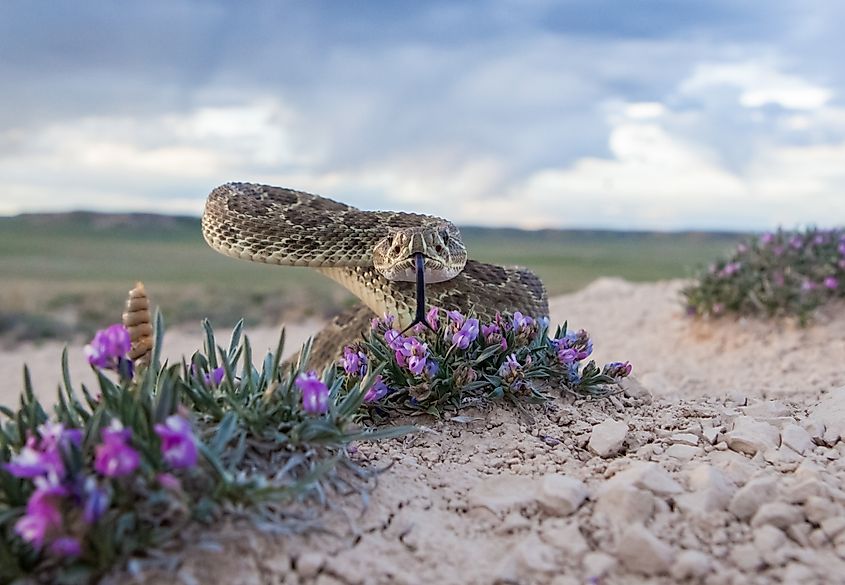
To add a bit of myself into this article, I had the pleasure of observing a prairie rattlesnake (Crotalus viridis) while exploring one of Alberta's top dinosaur hotspots. Although it was the remnants of much larger and long-lost reptiles that initially drew me to Dinosaur Provincial Park, the high density of buzzing pit vipers also caught my interest. Sure enough, on that very first morning, while jogging along the Red Deer River, I spotted a mature, approximately three-foot-long (they can grow over five feet) rattlesnake sunning itself in the middle of the trail. With its muted, blotchy pattern that perfectly camouflages it in the badlands, one of the things that makes this snake so striking is its calm demeanor. Although bites do occasionally happen, they mostly try to avoid humans and conserve their modest venom for small rodents and birds. As a case in point, the snake I saw showed no agitation at all. It simply moved to the side of the trail, and when I indicated I wanted to pass, it retreated into the tall grass. Fun fact: prairie rattlesnakes have the widest distribution of any rattlesnake species, ranging across the entire Great Plains from Canada to Mexico.
San Francisco Garter Snake
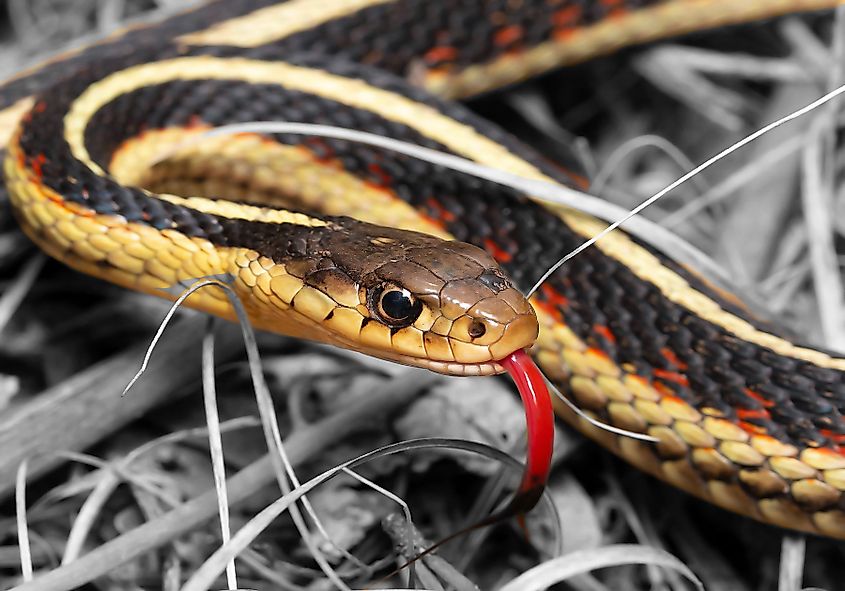
For the past few months, I've had the good fortune of road-tripping through the nooks and crannies of coastal California. At that time, I spotted a few eye-catching serpents. But the fairest and rarest of them all, the San Francisco Garter Snake (Thamnophis sirtalis tetrataenia) eluded my gaze. This small, nonvenomous, and endangered snake only resides on the San Francisco Peninsula and is, therefore, rarely spotted. If you are privy to its presence, its kaleidoscopic pattern will immediately reveal its significance. San Francisco Garter snakes have blue or turquoise bellies, bright orange heads, and stark black and red stripes filling in the gaps. However, their beauty is a catch-22, for it has garnered federal protections from the Endangered Species Act, but it is also illegally collected for its consumer appeal. This colorful garter snake also struggles against habitat loss, imbalances in the predator/prey (some of them invasive) dynamic, and other environmental concerns - all of which have reduced its fragile, once robust population to an estimated 1,500.
Rough Green Snake
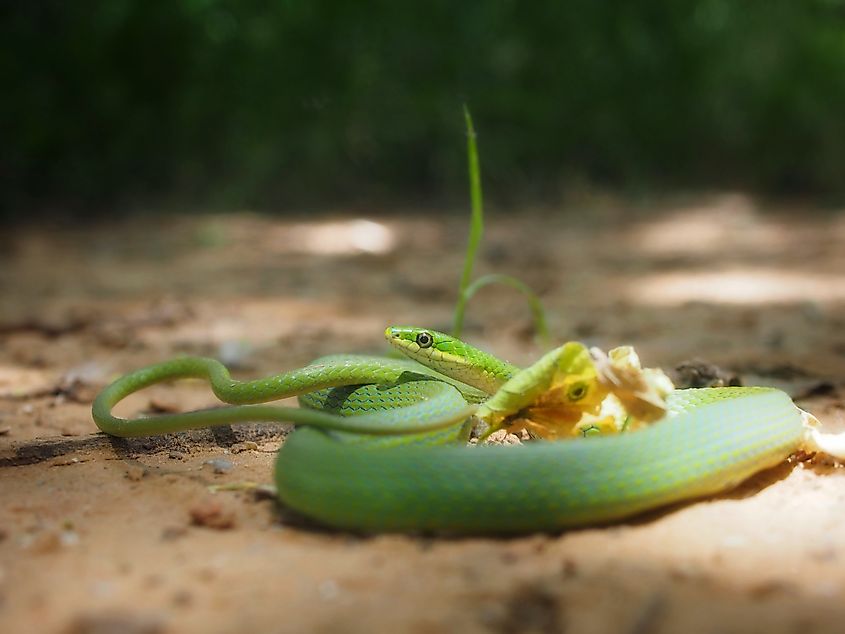
The rough green snake (Opheodrys aestivus) suffers from a misleading name, given its beady eyes and elegant presentation. The green part totally applies, though. This North American species covers a variety of habitats throughout the Mid-Atlantic and Southeast regions. Relying on a diet of insects, spiders, and other invertebrates, these bright green snakes can grow to be 32 inches in length - impressive given their slender physique. Rough green snakes are mostly arboreal, relying on the canopy and camouflage for safety. However, when it gets cold (as it certainly does in the northern reaches of their domain), they seek sanctuary beneath logs, rocks, and other fallen subjects of the forest.
Eastern Indigo Snake
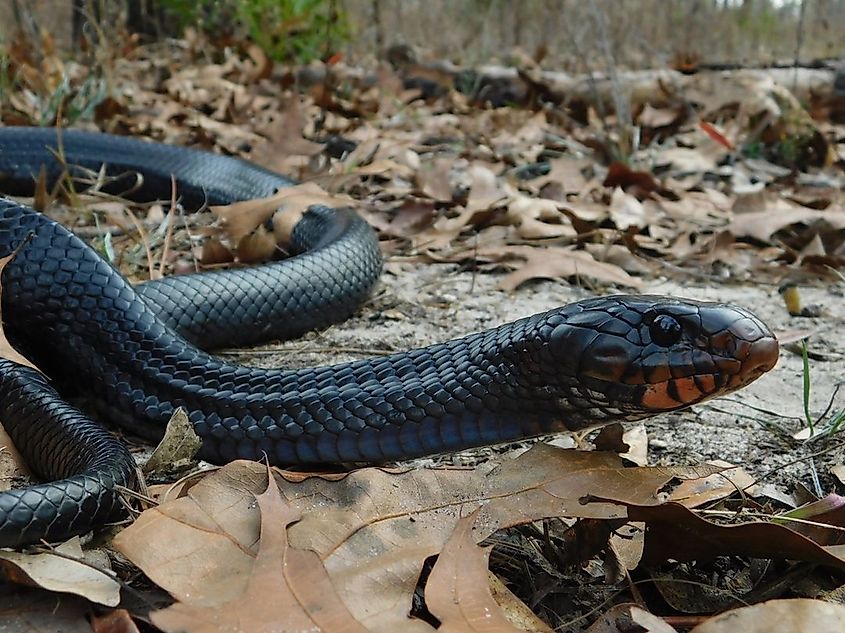
One of the largest snakes in North America (the longest native, nonvenomous species, at least) also happens to be a looker. The eastern indigo snake (Crotalus viridis) typically reaches lengths between five and seven feet but can top out at nine. Its bold body is accentuated by a shimmering black coloration, and further punctuated by blue highlights and a red-tinted head. With populations currently stabilizing in Peninsular Florida, southeastern Georgia and minor portions of Mississippi, this shadowy slitherer is on the upswing since being listed as full-on endangered in 1978. Along with the usual slew of anthropogenic stressors, one of the standout problems facing the eastern indigo snake is its propensity for inhabiting gopher holes. Yes, these burrows help them to hibernate during cold spells, but they also put it in the path of the brunt end of human hunting (even though the direct target differs).
Ball Python
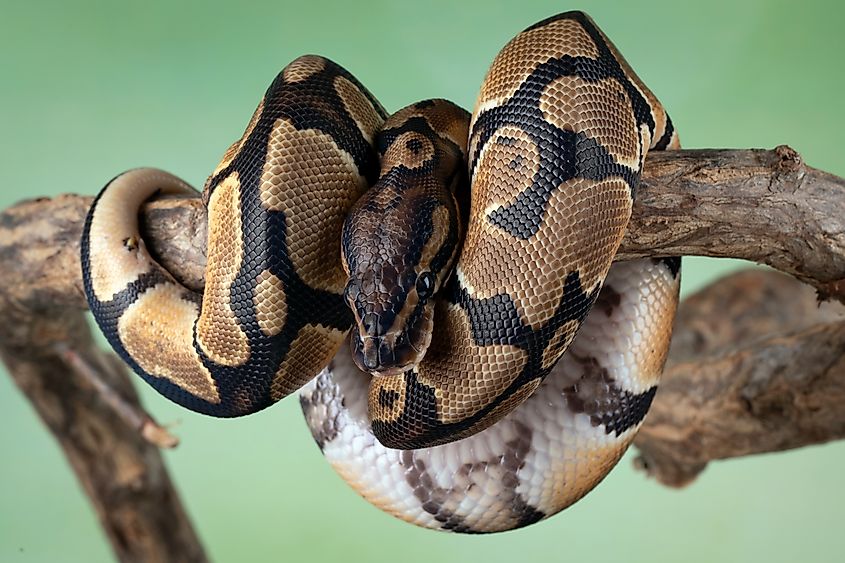
The ball python (Python regius), also known as royal python, bears the look of a quintessential constrictor snake, and has also become one of the most popular pet snakes. Averaging around four to five feet and weighing three-to-five pounds, these medium-bodied boas are of manageable proportions for urbanite pet owners. They are also famously well-mannered, even approaching affectionate as they advance in age. Ball pythons have a dark brown and/or black base overlaid with tan-colored swirls and blotches. Though they have now found themselves in houses and apartments the world over, ball pythons naturally inhabit the grasslands, savanna, and scattered forests of Sub-Saharan Africa.
Spiny Bush Viper
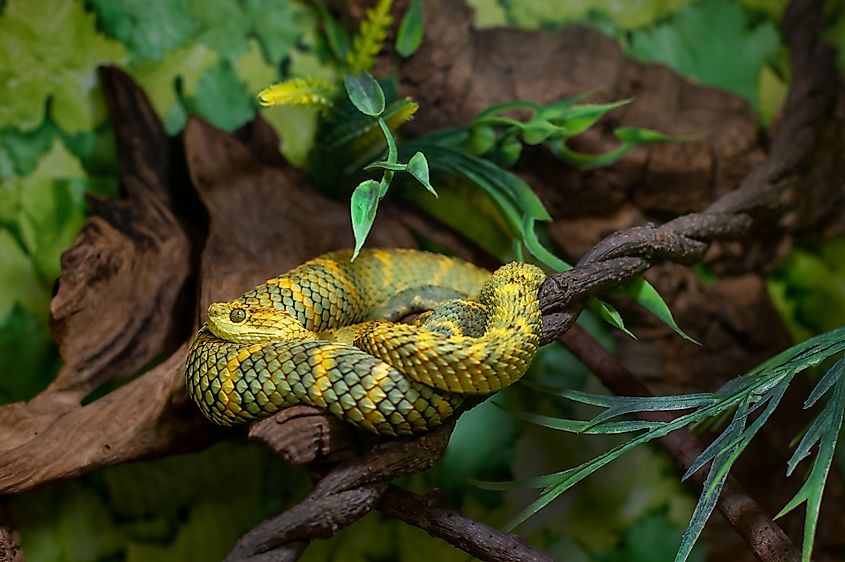
With flaring scales that give it a dragon-like look, calling the beautiful might be a stretch for some, but the spiny bush viper at least deserves the label "cool." Endemic to central Africa, this relatively small (i.e., 29 inches or less) venomous Viperidae snake is also often called the African hairy bush viper or rough-scaled bush viper. In any case, images of its bristling exterior are vividly memorable. Its coloration varies, appearing in shades of green, blue, brown, yellow, or any blend of these. Its bulging, abstractly-squiggled eyes with razor-thin pupils are also prominent.
Serpents Are Subjective
Snake morphology covers a wide range, thanks to the diverse environments they inhabit. Camouflaging in the desert is very different from doing so in the jungle. Living in water is quite distinct from dwelling in the trees. Still, the evolutionary adaptations of these reptiles have been quite inspiring to the human eye. While our visceral emotions may still be polarized toward these creatures (fair enough), their raw physical beauty—whether from color, intricate patterns, behaviors, or size—is undeniable.











